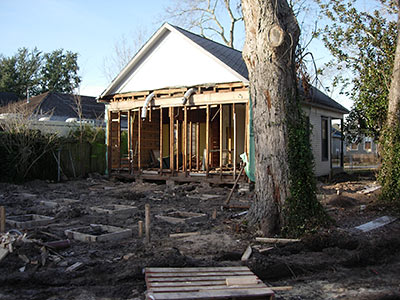
A Swamplot reader sends in photos from the construction site at the corner of Arlington and 10th St. in the Heights, where 7677 Homes has apparently been busy transforming a much-talked-about 1,048-sq.-ft. bungalow into a 3,128-sq.-ft. home for a new buyer. Reports our site snoop:
The back of the house came off several weeks ago, leaving between 600 – 700 SF of the original structure.
Now the forms for the new piers are in.
***

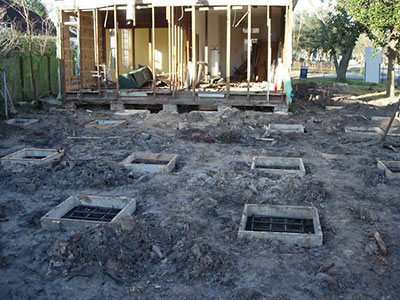
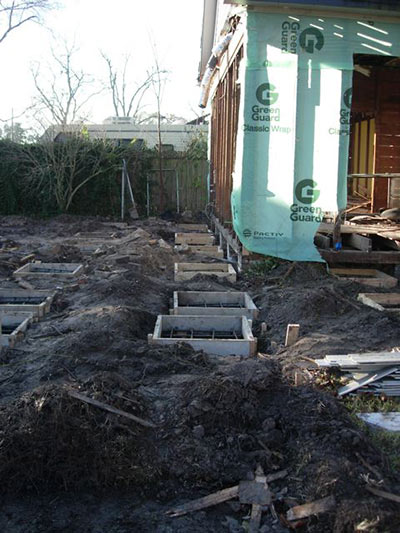
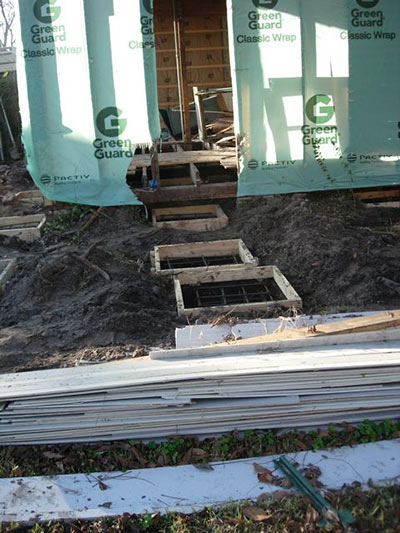
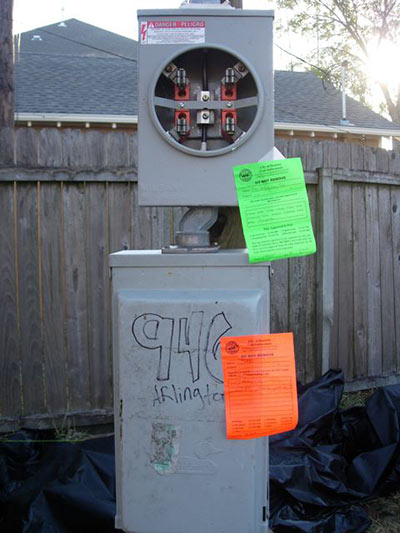
An earlier view:
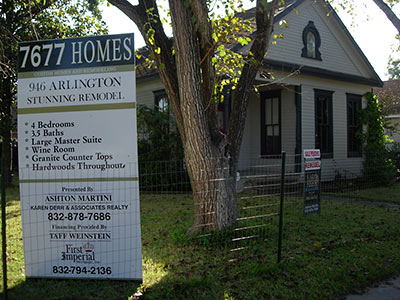
- 946 Arlington St. [HAR]
- Previously on Swamplot: Comment of the Day: Reports of the Demolition of 946 Arlington Have Been Greatly Exaggerated, Karen Derr Promises Not To Tear Down City Hall, Either
Photos of 946 Arlington St.: Swamplot inbox


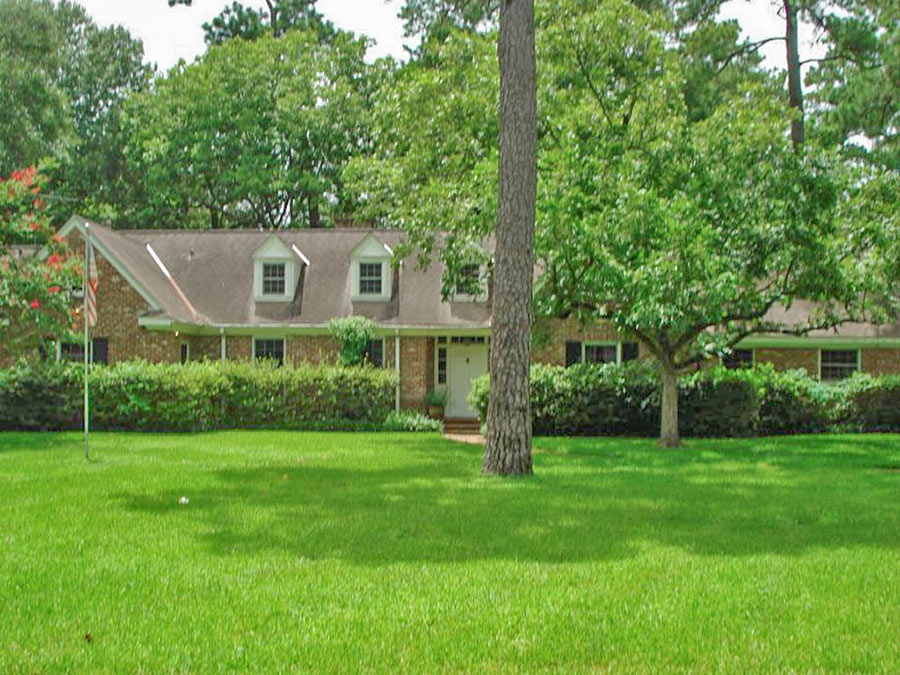

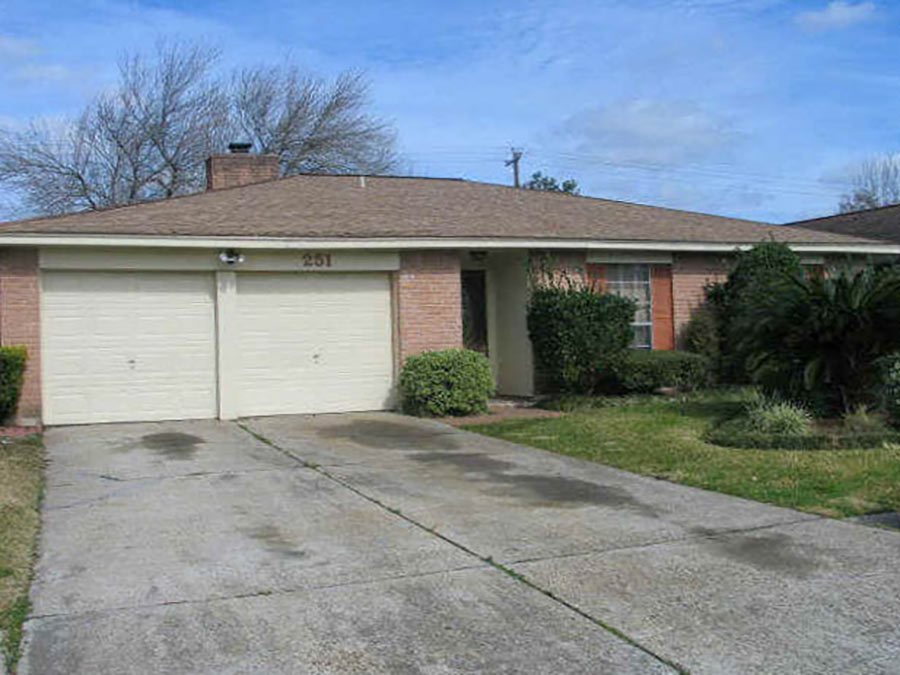
This is a “remodel” how? I mean honestly, how is this not a tear-down? When 50% of a structure is removed I just don’t think it should be called a remodel anymore.
If anyone is surprised by this, I suggest you do your research.
I noticed that they fenced the property in for construction but didnt make any extra effort to add a small bit of fencing on the nice Magnolia tree on the 10th Street side of the house. A small bit of fencing around that tree to prevent compaction of the roots during construction would go a long way towards preserving this beauty.
My question too, Trev. I have seen many home touted as remodels when one wall and a little flooring are all that remain. I would love to know what anyone else thinks – how much of a house needs to remain for it to TRUTHFULLY be called a remodel?
7677 Homes, eh? Sure it isn’t 666? Look for me curled into the fetal position inside the Immanuel Lutheran Church.
I think that depends on how big the home was to start with. The only section taken off this house was the lean to like piece on the back that I think held the kitchen. The gable end of the pitch roof at the back is clearly still visible. I would guess that at least two-thirds of the structure remain.
Whether we like it or not there are a very small pool of people willing to pay a quarter of a million dollars for a 1000sqft home. I certainly wouldn’t. Isn’t it better that three quarters of the exterior structure of the home will be kept compared to the most likely alternative?
^ finess:
I’d say the definition of remodel requires that AT LEAST 50% of the house needs to remain intact!
And that should include 50% of the character – inside & outside, and, 50% of the function – inside & outside, and, 50% of the neighborhood feel…
That’s why I’m a Luddite.
Wine room? barf. but seriously, I think we looked at this house when we were hunting and the kitchen at the back trembled when you entered, so its probably for the best.
movocelot, how did the neighborhood feel in 1905? And can we have hot and cold running water and central air whilst retaining 50% of the character?
I am not saying that houses shouldn’t be changed, what I am saying is that it is very dishonest to call something remodeled Victorian when about 5% will be old and 95% new.
It should be marketed as new construction with vintage elements.
Thats a fair point. At the end of the day I am hoping that they do manage to retain the character of that front portion of the house, at least externally. Internally most of the bungalows I have been inside have already been re-jigged at least once or twice as tastes in room layout have changed. Having watched this house slowly decaying over the last few years I still think this kind of reuse was probably the best option available.
^ Jimbo, probably in 1905, there were lots of trees, brush, coyotes, and a homestead here and there.
But the concept of Historic Preservation is from peoples’ perspective, not coyotes’…
So, after this area was PLATTED, there were trees, 60-100’ tall, bungalows, 20’ tall about 20-60’ apart, & lots of human life in between.
Also some coyotes. (Don’t get me started on where THEY are supposed to live!)
There was space. There was a human scale (which is by definition people-friendly.) Leaves to rake, including off of the shallow-pitched roof. A ditch to keep clear, including the crayfish the kids liked to catch. And as a result, there was human interaction.
~
Time and time again we read that the very qualities that attract newcomers to a certain neighborhood are the very traits annihilated by them!
I understand that progress rolls roughshod over the past, and, that’s how it should be; something better is always welcome.
Yet why are old homes with their handmade and cozy qualities so popular and desirable? Because they are people-friendly, comfortable.
~
If you are “renovating†something, PLEASE respect it also, for the very qualities which drew you to it.